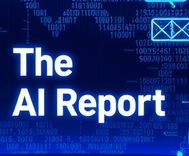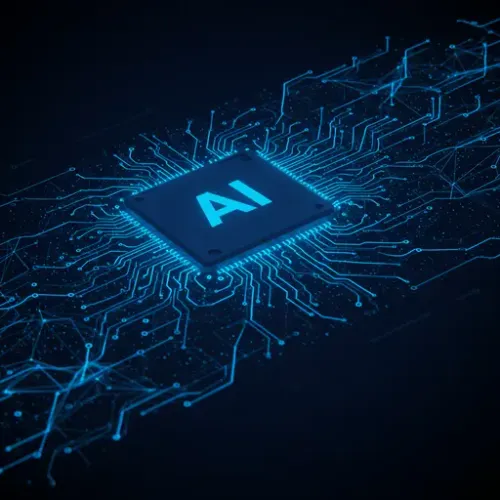A gallerist’s view – how artificial intelligence will roll out in the visual arts

The AI Report
Daily AI, ML, LLM and agents news
Navigating the AI Blitzkrieg: A Gallerist's Candid View on the Visual Arts
Artificial intelligence is not approaching with a gentle ripple; it’s a tsunami, a "blitzkrieg" that will sweep across our economy and society, fundamentally reshaping industries, including the visual arts. Far from a polite, structured rollout, AI’s integration will be swift, decisive, and overwhelming. As a gallerist deeply embedded in the art world, I've observed first-hand the early tremors of this transformation, and I believe understanding its true nature is paramount for anyone working in the creative sector.
The Unseen Drivers: Cost Savings Before Productivity Gains
Contrary to popular belief, the initial wave of AI adoption, particularly by large institutions like banks and multinational corporations, isn't primarily driven by a thirst for immediate, massive productivity increases. My experience with robust CRM systems like Salesforce, which AI is set to replace, suggests that early sales productivity gains will be modest—perhaps only a single-digit percentage. The true, immediate "commercial success" of AI, in the eyes of boardrooms, will be found in aggressive headcount reductions. Think of it as a brutal, yet undeniably effective, strategy for "strategic efficiency."
Large employers are already quietly retrenching staff, anticipating what AI will deliver tomorrow, not just what it can do today. These cuts are not accidental; they are staged, spread across departments to avoid public outcry. This reminds me of Comrade Joseph Stalin’s chilling management strategy: "When there’s a person, there’s a problem. When there’s no person, there’s no problem." Expect fewer persons. For businesses, this translates to significant savings on salaries, superannuation, payroll tax, and other employee-related costs. If your creative business hasn't even adopted a CRM, this AI blitz offers a compelling, if stark, reason to streamline your administration and outreach processes.
The "Carrot and Stick" of AI Adoption
Human psychology dictates that we tend to resist change. To overcome this, the AI rollout employs a potent "carrot and stick" approach. The "carrot" is deceptively simple: you still have a job. The "stick," however, is formidable. With fewer colleagues left to share the workload, you will be compelled to implement AI tools simply to perform the tasks expected of you and, crucially, to keep your position. This isn't about enthusiasm; it's about survival. The sheer workload and, frankly, fear, will become potent management tools, driving rapid adoption of these new systems.
AI's Transformative Impact on Art Galleries
So, what does this mean specifically for art galleries? The impact will vary significantly from that on large corporations. Most Australian art galleries, for instance, are micro-businesses with one to three employees. The most immediate and profound changes will occur in the "back-end" processes. Art gallery bookkeepers and financial administrators, be warned: your traditional roles will be automated. This is a given.
AI will seamlessly integrate with existing systems, automating tasks from client identification via facial recognition upon entry, instantly relaying their details to gallery staff, to overseeing the entire sales process. Imagine a Siri-like assistant overseeing conversations, registering sales, pulling client details, preparing documentation, and emailing invoices—all with "no hands." This same system can instantly update stock lists, notify artists, schedule payments, trigger delivery logistics, and even flag marketing opportunities. Your back office will become a tireless, unpaid co-worker, freeing up immense resources.
For smaller galleries, this means liberation from administrative burdens. Employees wearing many hats will spend less time on bookkeeping, finance, business administration, and stock management. The demonstrable benefit? More precious time for face-to-face engagement with clients.
The Human Element: Your Untapped Advantage
In this evolving landscape, what will truly set you apart is not your ability to crunch numbers or manage inventory—AI will excel at that. What will matter is wisdom, emotional intelligence, and the irreplaceable human touch. My expectation from financial human resources, for example, will shift from mere number-spitting to becoming consultant partners in business growth.
For employees in the art world, my strongest advice is this: position yourself "front of house." Polish your emotional IQ, refine your communication skills, and confidently step into client-facing roles. While the industry has historically been slow to adopt digital tools like e-commerce, the AI revolution demands a forward-looking perspective. In a world increasingly driven by automation, it will be the depth of human connection that defines success and value.
A Sobering Outlook and a Glimmer of Hope
On a broader scale, I foresee a fascinating swing back to the tangible, the authentic, and the human-made in our lives, a positive outcome for artists and the arts industry as a whole. However, let me be unequivocally clear: the AI revolution will not begin with innovation and joy. It will begin with a spreadsheet, a redundancy list, and a "strategic efficiency" press release. Prepare not with fear, but with strategic adaptation, focusing on those uniquely human skills that AI cannot replicate.

The AI Report
Author bio: Daily AI, ML, LLM and agents news
